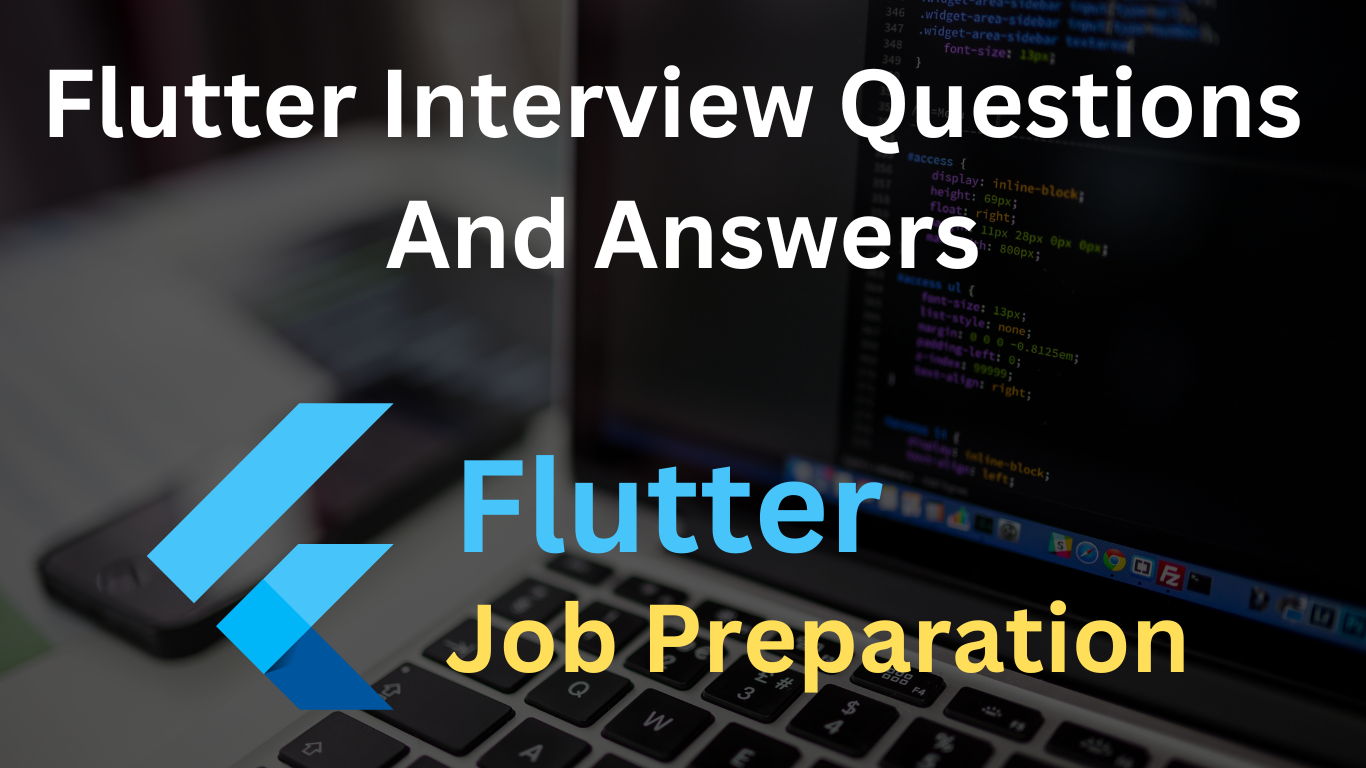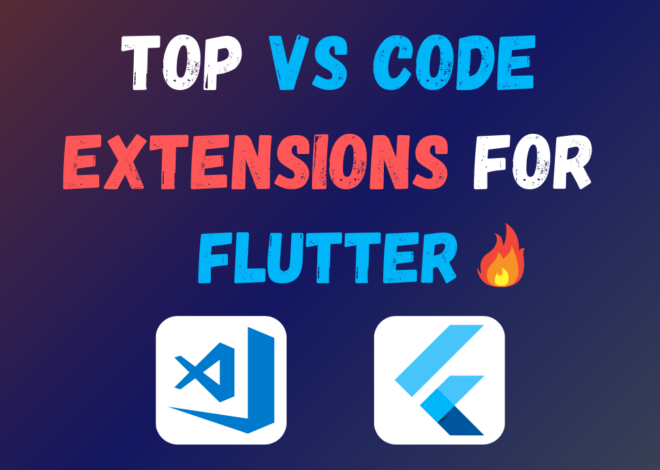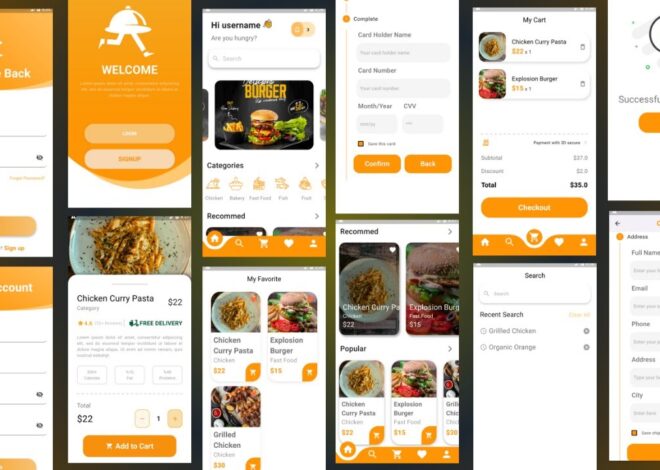
Top Flutter Interview Questions & Answers For Job 2024
Flutter, Google’s UI toolkit for building natively compiled applications for mobile, web, and desktop from a single codebase, has gained immense popularity among developers. As demand for Flutter developers continues to rise, it’s crucial to be well-prepared for Interview Questions & Answers. In this article, we’ll dive into a curated list of top Flutter Interview Questions & Answers and provide comprehensive answers to help you excel in your next interview.
What is Flutter, and how does it differ from other mobile development frameworks?
- Flutter is an open-source UI toolkit developed by Google for building natively compiled applications for various platforms, including iOS, Android, web, and desktop, using a single codebase. Unlike other frameworks, Flutter uses a unique approach called “widgets,” which are building blocks for creating user interfaces. Flutter’s hot reload feature allows for rapid iteration and development, while its high-performance rendering engine ensures smooth animations and fast performance.
Explain the key advantages of using Flutter for mobile app development.
- Flutter offers several advantages, including:
- Hot Reload: Flutter’s hot reload feature allows developers to instantly view changes in their app without losing state, speeding up the development process.
- Single Codebase: With Flutter, developers can write code once and deploy it on multiple platforms, reducing development time and effort.
- High Performance: Flutter’s Dart-based engine compiles directly to native machine code, resulting in fast startup times and smooth animations.
- Rich UI Components: Flutter provides a rich set of customizable widgets for building beautiful and highly interactive user interfaces.
- Strong Community Support: Flutter has a vibrant community of developers, with ample resources, plugins, and packages available to enhance productivity and collaboration.
What is the difference between StatelessWidget and StatefulWidget in Flutter?
- StatelessWidget: StatelessWidget is a widget that does not maintain any state. It is immutable, meaning its properties cannot change once it’s been created. StatelessWidget is ideal for representing static content that does not change over time.
- StatefulWidget: StatefulWidget, on the other hand, is a widget that can maintain state. It consists of two classes: a StatefulWidget class, which is immutable and represents the widget itself, and a State class, which is mutable and holds the widget’s state. StatefulWidget is used for building dynamic UIs that can change based on user interaction or other factors.
What is a Widget in Flutter?
- In Flutter, everything is a widget. A widget is a basic building block of a Flutter application, representing an immutable description of part of the user interface. Widgets can be combined and nested to create complex UI layouts. Flutter provides a wide range of built-in widgets, including structural elements (such as containers and rows), input elements (such as buttons and text fields), and styling elements (such as padding and margins).
Explain the concept of “State Management” in Flutter and discuss different approaches.
- State management in Flutter refers to the management and manipulation of the state of a widget, including its properties and behavior. Flutter offers various approaches to state management, including:
- SetState: The SetState method is the simplest form of state management in Flutter. It allows a widget to rebuild itself in response to changes in its state.
- InheritedWidget: InheritedWidget is a mechanism for sharing data across the widget hierarchy. It allows widgets to access and update shared state without passing it explicitly through the widget tree.
- Provider: Provider is a popular state management solution in Flutter, built on top of InheritedWidget. It provides a simple and efficient way to manage application state and dependency injection.
- Bloc Pattern: Bloc (Business Logic Component) pattern is an architecture pattern for managing state in Flutter apps. It separates business logic from UI, making code more modular and testable.
What are Keys in Flutter, and when would you use them?
- Keys in Flutter are identifiers used to uniquely identify widgets in the widget tree. Keys are useful when dealing with dynamic lists or when you need to preserve the state of widgets across rebuilds. Keys ensure that Flutter can efficiently update and manage the widget tree, especially when widgets are added, removed, or reordered dynamically.
Discuss Flutter’s support for platform-specific features and integrations.
- Flutter provides robust support for platform-specific features and integrations through platform channels. Platform channels allow Flutter apps to communicate with platform-specific code written in Java/Kotlin (for Android) or Objective-C/Swift (for iOS). This enables Flutter apps to access native device features, such as camera, GPS, and sensors, and integrate with platform-specific APIs and services.
How do you handle navigation in Flutter apps?
- Navigation in Flutter apps is typically managed using the Navigator class. The Navigator class provides methods for navigating between different screens or routes within an app. Flutter offers various navigation techniques, including:
- Push Navigation: Push navigation adds a new route to the navigation stack, allowing users to navigate forward to the new screen.
- Pop Navigation: Pop navigation removes the current route from the navigation stack, allowing users to navigate back to the previous screen.
- Named Routes: Named routes provide a way to navigate to specific screens using a predefined route name, making navigation more declarative and predictable.
Explain the concept of “Widget Lifecycle” in Flutter.
- The widget lifecycle in Flutter refers to the series of events that occur during the lifespan of a widget, from its creation to its disposal. Flutter widgets go through various lifecycle stages, including:
- Initialization: The widget is created and initialized with its properties.
- Building: The widget builds its UI representation using the build method.
- Updating: The widget updates its UI in response to changes in its state or properties.
- Disposal: The widget is removed from the widget tree and disposed of.
How do you handle asynchronous operations in Flutter?
- Asynchronous operations in Flutter are typically handled using Future, Stream, or async/await syntax. Flutter provides various asynchronous APIs for performing tasks such as network requests, file I/O, and database operations. Developers can use features like FutureBuilder and StreamBuilder to handle asynchronous data in Flutter UIs, ensuring a smooth and responsive user experience.
What are the main differences between StatelessWidget and StatefulWidget?
- StatelessWidget: Represents widgets that do not require mutable state. These widgets are immutable, meaning their properties cannot change once they are constructed.
- StatefulWidget: Represents widgets that maintain state. These widgets can change their appearance in response to user actions or other events by updating their state using the setState method.
Explain the purpose of the MaterialApp and Scaffold widgets in Flutter.
- MaterialApp: MaterialApp is a widget that provides the basic structure for a Flutter app, including navigation, theming, and accessibility settings. It serves as the root widget of the app and encapsulates the entire app’s UI.
- Scaffold: Scaffold is a widget that implements the basic layout structure of Material Design apps. It provides a framework for building app screens with features such as app bars, drawers, floating action buttons, and bottom navigation bars.
What is the purpose of the Flutter Inspector, and how can it be useful during development?
- The Flutter Inspector is a powerful tool for debugging and inspecting Flutter apps. It allows developers to visualize the widget tree, inspect widget properties, and debug layout issues in real-time. The Flutter Inspector can be invaluable for identifying UI bugs, optimizing performance, and understanding the structure of complex UI layouts.
Explain the concept of “Widget Composition” in Flutter and provide an example.
- Widget Composition refers to the process of combining multiple widgets to create more complex UIs. In Flutter, widgets can be nested and composed together to build sophisticated user interfaces. For example, you can combine basic widgets like Text, Image, and Container to create a custom button widget with a specific design and functionality.
What is the purpose of the MediaQuery widget in Flutter, and how is it used?
- The MediaQuery widget provides information about the current device’s screen size, orientation, and pixel density. It allows developers to design responsive layouts that adapt to different screen sizes and orientations. MediaQuery is typically used to retrieve device-specific information and adjust widget properties dynamically based on the device’s characteristics.
Explain the role of the setState method in Flutter, and when would you use it?
- The setState method is used to update the state of a StatefulWidget in Flutter. When called, setState notifies the framework that the widget’s state has changed, triggering a rebuild of the widget subtree. Developers use setState to update UI elements in response to user interactions, network responses, or other events that require changes to the widget’s appearance or behavior.
What are the main differences between Row and Column widgets in Flutter?
- Row: Arranges its children in a horizontal line, from left to right, within the constraints of its parent container’s width.
- Column: Arranges its children in a vertical column, from top to bottom, within the constraints of its parent container’s height. Both Row and Column widgets are flexible and can contain any number of child widgets, allowing developers to create flexible and responsive layouts in Flutter apps.
Explain the concept of “Stateful Widgets” in Flutter and when you would use them.
- Stateful Widgets are a type of widget in Flutter that can maintain state and update their UI in response to changes. Stateful Widgets consist of two classes: a StatefulWidget class, which is immutable and represents the widget itself, and a State class, which is mutable and holds the widget’s state. Stateful Widgets are used for building dynamic UIs that can change based on user interaction, network responses, or other events.
What is Flutter’s approach to handling layout constraints, and how does it differ from other frameworks?
- Flutter uses a flexible layout system based on constraints and flexible boxes (or “flex”) to adapt UI layouts to different screen sizes and orientations. Flutter’s layout system is highly customizable and allows developers to specify precise layout constraints for their UI elements. Unlike other frameworks that use fixed layouts or complex layout hierarchies, Flutter’s approach to layout is simple, efficient, and responsive, ensuring consistent UI rendering across devices.
Explain the concept of “Widget Lifecycle” in Flutter and discuss its significance in app development.
- The Widget Lifecycle in Flutter refers to the series of events that occur during the lifespan of a widget, from its creation to its disposal. Understanding the Widget Lifecycle is crucial for building robust and performant Flutter apps. By leveraging lifecycle events such as initState, didUpdateWidget, and dispose, developers can manage resources, initialize state, and perform cleanup tasks efficiently. The Widget Lifecycle also plays a critical role in managing state, updating UI elements, and optimizing app performance.
Preparing for a Flutter interview can be daunting, but with a solid understanding of fundamental concepts and practical experience and these Interview Questions & Answers, you can confidently tackle any Interview Questions & Answers. By mastering these Interview Questions & Answers and topics such as Flutter basics, state management, widget lifecycle, navigation, and asynchronous programming, you’ll be well-equipped to showcase your skills and land your dream job in Flutter development. Remember to practice coding exercises, build sample projects, and stay up-to-date with the latest Flutter trends and best practices to stand out as a top candidate in the competitive job market and checkout other Interview Questions & Answers on our site. Good luck!


